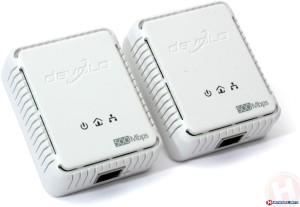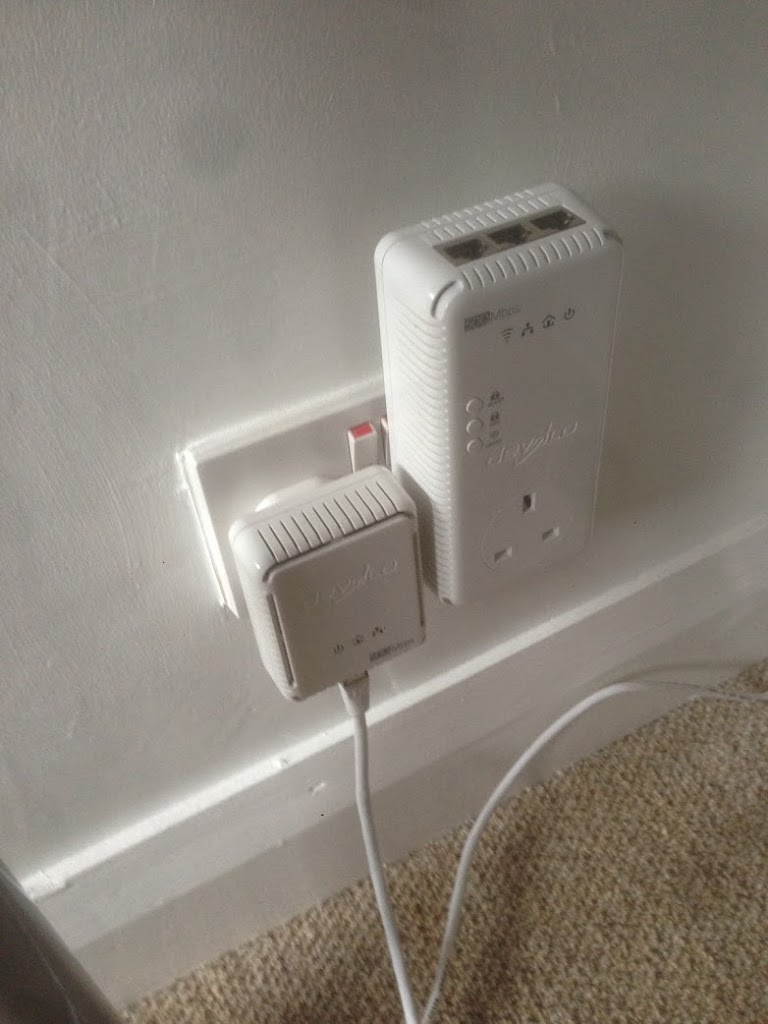The wifi signal from the house does not quite reach the shed, a common problem for people with sheds/workshops/offices at the end of the garden.
The best solution is to run ethernet cable from the house but this can be a major hassle, particularly if, like me, your router is at the front of the house and the shed is out the back. One alternative is to use powerline adapters. Powerline adapters extend an existing network connection by using the power cabling in your house to transfer network traffic.
I already use these Devolo powerline adapters to connect a non-wifi enabled computer in the spare room and have found them to be very reliable:

Although the model I have is nominally rated at 500Mbps, this is a reference to the theoretical limits of the circuitry in the device and the actual bandwidth will generally be significantly lower.
Also, the signal is limited by the length of electric cable it is going across: the longer the cable and the more electrical noise on the circuit, the less bandwidth you get. Powerline is also a shared medium meaning all devices on the network share the bandwidth (unlike a switched ethernet network).
I have a 100Mbs fibre connection to my house and these are the typical download speeds I get:
| CONNECTION | SPEED |
| Ethernet connected to router | 100 Mbs |
| Ethernet connected to powerline in bedroom | 56 Mbs |
| Wifi (5 Ghz) in bedroom | 61 Mbs |
| Wifi (2.4 Ghz) in bedroom | 36 Mbs |
When I was investigating network solutions for the shed, I had low expectations that powerline adapters would work.
The prevailing view on the internet seems to be that powerline adapters do not work over multiple consumer units (my shed is wired with a separate consumer unit). However, I reasoned there must be a possibility of it working on the grounds that a) the same internet pundits often claim that powerline would not work on separate power circuits also – which I knew to be wrong, having tried it – and b) I could not see why, if electricity could travel over the CU, the powerline signal could not do so also.
I did a bit more research, and it seems that the manufacturers won’t guarantee the adapters work across consumer units because they can’t account for all the variations in home wiring and this means the only the way you can be 100% sure it will work in your house is to try it out.
I am pleased to say that, when I was finally able to test it, it worked fine. However, this did not help the wireless situation, so last weekend I bought another adapter from devolo with a built-in wireless access point (£70).
The device (on the right below) has a pass-through electric socket and can broadcast at 5Ghz or 2.4Ghz (but not both at the same time):

I configured it to broadcast the same SSID and security settings as my main network so that any computers or phones being taken from the house will automatically join the stronger signal in the shed.
It all works very well, although performance is mediocre – I get 21 Mbs regardless of how I am connected to the powerline network (ethernet to the plug, or using either 5 or 2.4 Mhz wifi) so presumably the power circuit is the limiting factor. This is not surprising in my case since there is around 40m of cable from the consumer unit in the house to the shed.